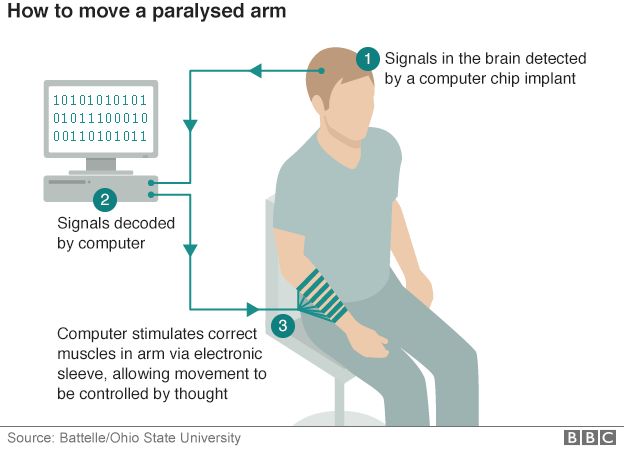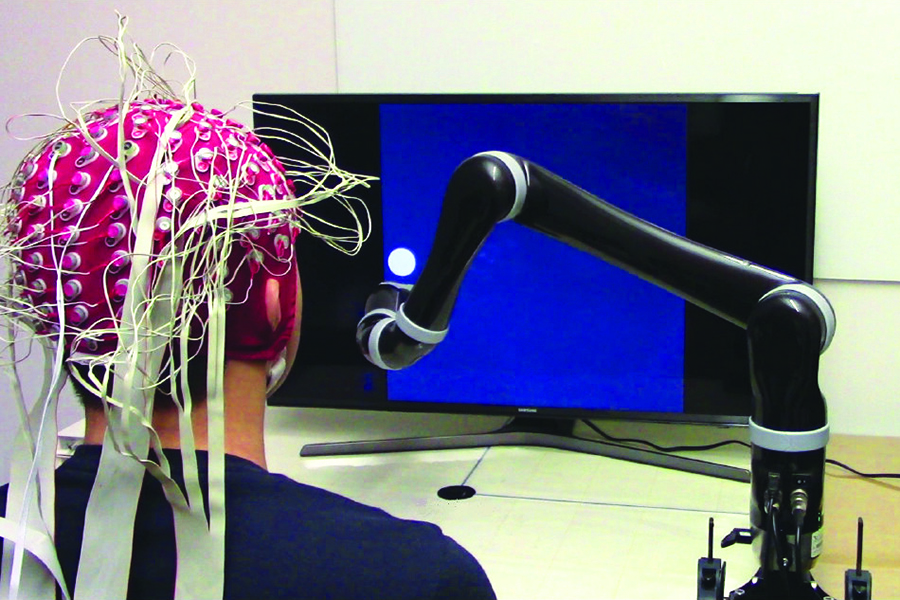This wearable tech monitors runners’ muscle fatigue
Boston is celebrating the completion of another successful marathon, one that passed just a couple of miles from MathWorks headquarters yesterday. The 2017 Boston Marathon provided memorable moments, from 70-year-old Kathrine Switzer completing the race 50 years after being the first female to run the race with a bib number, to Marc Fucarile, who lost a leg in the 2013 Marathon bombing, finishing this year’s race on a handcycle. The race had an estimated 500,000 spectators as well.
The popularity of marathons is no surprise: Running has become one of the most popular forms of exercise worldwide, with over 10 million runners in the US alone. Its popularity helped drive the wearable tech market to an estimated $28.7 billion in 2016. Most wearable tech available today comes in the form of watches, sneakers, hats and even socks and focuses on GPS positioning, activity tracking, and heart rate monitoring.

Now, new wearable tech is targeting runners’ muscle fatigue. Muscle fatigue is one of the most common issues for distance runners including elite athletes and weekend warriors alike. It is a leading cause of running-related injuries (RRI).
Under Armour recently released smart running shoes that estimate muscular fatigue levels, allowing athletes to use the information to alter a workout’s intensity. Competitor.com explained how it works: “… the technology embedded in the shoes will measure and average the air time of a sequence of jumps as an indicator of muscle fatigue. This helps track an athlete’s recovery status over time and provides guidance on how to alter the intensity of a workout.”
Truly measuring muscle fatigue is more complicated, typically relying on electromyography (EMG) to record the electrical activity produced by skeletal muscles. MIT Technology Review explained the difficulty in measuring muscle fatigue:
“Muscle fatigue has always been difficult to measure for a number of reasons. For a start, the most sensitive method involves inserting a fine wire into the muscle to measure the electrical stimulation of the nerves and determine the force the muscle can exert. As the muscle tires, this force drops, as does the electrical signal.
“There is another, more flexible approach. This is to use electrodes on the surface of the skin to monitor the electrical activity of the nerves below. The problem with this method is that the electrodes have to be carefully placed and that’s hard for people who are not medically trained.
“But neither technique is ideal for measuring muscle fatigue in ordinary circumstances because these devices can cost tens of thousands of dollars and in any case cannot be used outside the lab.”
New wearable that measures muscle fatigue
Researchers from the King’s College London developed a wearable device that measures muscle fatigue while participants run outside the lab. The wearable device is a pair of leggings with surface EMG (sEMG) electrodes embroidered into the fabric to take measurements of the electrical stimulation of the quadricep muscles.
The leggings overcome many of the limitations with deploying sEMG outside of a laboratory setting. The electrodes are pre-positioned to align with the correct location on the quadriceps, so they do not require a medical specialist to place the sensors. The electronics are lightweight, utilizing 3 (0.25g) printed circuit boards and an Arduino microcontroller. Additionally, the cost of the system is quite low when compared to commercial sEMG solutions.

(a) The interior of the leggings, showing the sensors embroidered into the fabric of the leggings. (b) the exterior of the leggings. The electric thread is on the exterior of the fabric to isolate them from the skin. Image credit: King’s College London
The leggings can be worn while running in different environments, which was crucial to test the muscle response to varied running surfaces such as sand versus asphalt. The research, detailed in the paper “Wearable Embroidered Muscle Activity Sensing Device for the Human Upper Leg,” showed that running on soft surfaces such as sand may increase the likelihood of suffering from RRIs. Data from the device highlighted the dependency between running surface and muscle fatigue.
An Arduino microcontroller digitizes and stores the collected data while the participant is running. To quantify muscle fatigue from the sEMG collected data, the system includes a signal analysis script written in MATLAB. The script calculates the instantaneous average rectified value (iARV) that indicates the muscle fatigue as a function of time. Wavelets were used for time-frequency spectral analysis.

iARV of the quadriceps muscles while the participant runs on asphalt (blue), sand (red), and the athletics track (black). Image credit: King’s College London
Future uses for textile-based wearables
Textile-based wearable tech is an emerging field. While the immediate benefits of the technology will serve athletes, the results of the research in this area will impact other fields of study as well.
Through collecting data in different outdoor environments, the researchers from King’s College London determined the demands created by running on the various surfaces. This could aid in understanding the power demands for bipedal robots walking on various surfaces. The researchers also shared that the information is useful for the development of exoskeletons and prostheses for use in the outdoor world.









コメント
コメントを残すには、ここ をクリックして MathWorks アカウントにサインインするか新しい MathWorks アカウントを作成します。